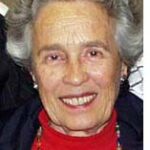By Eileen Wingard

ENCINITAS, California — Michael Tseitlin, San Diego County’s highly respected violin pedagogue and organizer of the Virtuosi USA Concert Series, introduced one of its programs at the Encinitas Library on June 25, featuring Violinist Pasha Tseitlin, Pianist Nic Gerpe and Bassoonist Judith Farmer.
Pasha Tseitlin, son of Michael and Irina Tseitlin, plays violin as if he were born with a bow in his hand, performing with confidence and innate ability. Perhaps that should be expected from a scion of a musical dynasty which goes back to his great-great uncle, Violinist Lev Tseitlin. This forebearer studied with Leopold Auer, teacher of three of the most famous violin virtuosi of the past century: Jascha Heifetz, Mischa Elman and Nathan Milstein.
Pasha’s grandfather, Alexander Tseitlin, was a composer and conductor at the Bolshoi Theater and the youthful violinist’s grandmother was a ballerina with the Bolshoi Ballet. Pasha’s mother, Irina Tseitlin, is a noted performer and pedagogue, teaching alongside her husband, Michael, who numbers among his former students, David Chen, concertmaster of the Metropolitan Opera Orchestra and Frank Almond, concertmaster of the Milwaukee Symphony Orchestra.
After early training with his parents, Pasha earned his BA degree at USC, where he studied with Alice Schoenfeld, and received a Masters in Performance from the Colburn School, under the tutelage of Robert Lipsett. He performs modern music with Pianist Nic Gerpe, calling their collaboration, Panic Duo.
Gerpe received his Doctor of Musical Arts degree from USC, where Pasha and he met. The impressive pianist has worked with many contemporary composers such as Steve Reich and Gernot Wolfgang, whose works were featured on the evening’s program. Gerpe serves on the faculty of the Pasadena Conservatory of Music.
Judith Farmer, a superb bassoonist, graduated from Indiana University and studied at the Hochschule fuer Musik in Vienna.
She played principal bassoon in the Austrian Radio Orchestra and was a soloist at the Salzburg Festival. Currently, she plays principal bassoon in the Santa Barbara Chamber Orchestra and teaches on the music faculty of USC’s Thornton School of Music. She is married to Composer Gernot Wolfgang, whose works, scored for the unusual combination of violin, bassoon and piano, concluded the evening’s program.
Wolfgang is a native of Austria. He was present at the program and offered a few words of explanation before the performance of his compositions. A graduate of USC, where he studied Scoring for Motion Pictures and TV, he writes in a multiplicity of styles. Each of the five movements of Lyrical Intermezzo was characterized by music from a different country. Particularly impressive were the first movement, The Autumn Wind, which resembled works by Spanish composers such as Manuel De Falla and Isaac Albeniz and the third movement, Flutes, Violins and Trumpets, which sounded like Irish music from Riverdance. The Intermezzo was filled with idiomatic melody lines and showcased the violin’s beautiful tone and formidable technique, allowed the bassoon ample opportunity to shine, and displayed the pianist’s outstanding abilities. The final short work, Flurry, a rapid romp, written in 2011, served to conclude the unusual program.
The evening opened with Nico Muhly’s Drones and Violin (2011). This was in the minimalist style with one instrument repeating a drone and the other contributing brief, repetitive motifs, which either mesmerized or, as with this listener, seemed to resemble the endless repetitiveness of some pop music. Although Tseitlin and Gerke performed with commitment, this music was devoid of melodic contour, interesting harmonic progressions or other elements of older “classical music.”
The second work on the program, Andre Previn’s Sonata for Bassoon and Piano was written in 1997. It proved to be an excellent vehicle for the virtuosity of Farmer, who made a convincing case for the bassoon as a serious solo instrument.
This jazz inspired work was in the style of Gershwin and Bernstein. The outer movements were characterized by fast sections bookending engaging lyrical interludes. The second movement ended in a slow waltz tempo and was beautifully executed by Farmer.
Anne LeBaron’s Devil in the Belfry (1993), for violin and piano, inspired by Edgar Allen Poe’s tale of the same name, opened with the piano sounding like tolling bells. There was a jig-like tune in the violin and an interesting pizzicato section, all following the storyline of the well-regulated Dutch village, disrupted by the outsider, a fiddler, who climbed the bell tower, attacked the belfry-man and rang the bell 13 times instead of 12. Tseitlin and Gerpe were convincing in their rendition of the piece.
The three musicians, Tseitlin, Gerpe, and Farmer, have all played together at the Beverly Hills International Music Festival.
With the presenter, one of the composers and all three performers connected through ties of family and friendship, there was a palpable intimacy about this wonderful evening of music making.
*
Wingard, a former violinist with the San Diego Symphony, is a freelance writer specializing in coverage of the arts. She may be contacted via eileen.wingard@sdjewishworld.com. Comments intended for publication in the space below MUST be accompanied by the letter writer’s first and last name and by his/ her city and state of residence (city and country for those outside the United States.)